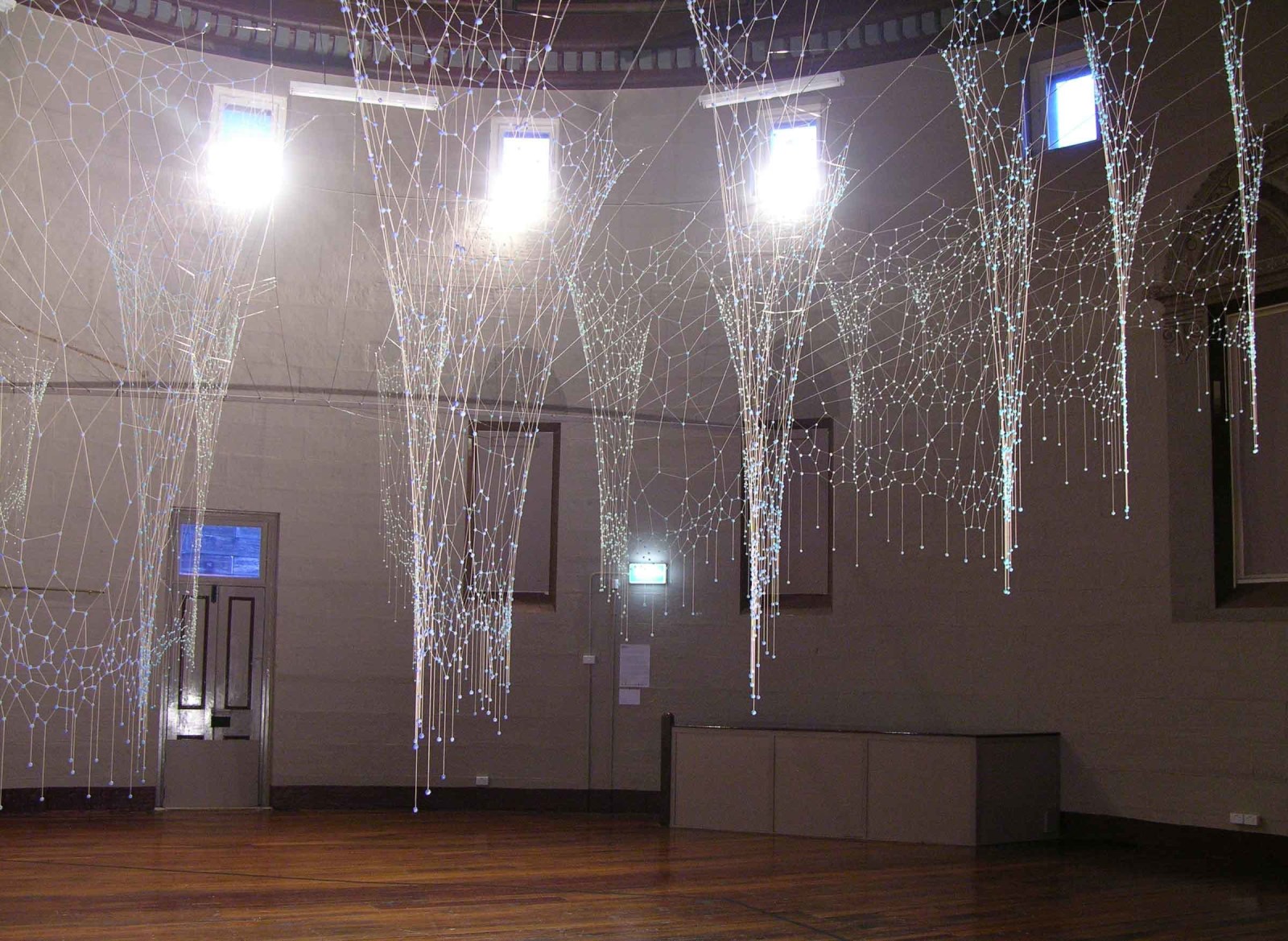
Ranjani Shettar, best known for her free-falling, suspended works of thread and beeswax webs, has just installed Flame of the Forest, at Third Floor Hermes, Singapore. The site-specific installation comprises a wall installation, as well as a floor artwork in teak and a hanging sculpture in rosewood.
Based in Bangalore, the petite 34-year-old artist has gained considerable international recognition in recent years, particularly in the United States. Her piece, Just a Bit More, first presented at the Sydney Biennale in 2006, has been acquired by the MoMA in New York for its permanent collection, while Me, No, Not Me, Buy Me, Eat me, Wear Me, Have Me, Me, No, Not Me (2006-2007) has been acquired by the San Francisco Museum of Art, and the Kiran Nadar Museum of Art in New Delhi bought Sing Along (2008-2009).
The artist creates delicate sculptural installations that blend modern technologies and traditional craft techniques reflecting India's own collision of tradition and modernity. While she is probably best known for her beeswax webs, she has also used tamarind kernel powder and muslin, sawdust, wood, latex, PVC tubing, silicone rubber and metal - always creating minimalist works with what appears to be an organic shape yet they often follow a very strict and planned pattern.
"Natural textures, colours and qualities are unparalleled by man-made materials. But, that does not mean I do not use factory-made products; it just depends on the work in question and the subject it concerns. If some materials are choices based on aesthetics, there are others based on philosophy and the associations a material has," she explains.
Shettar's works are often site-responsive. While artist-in-residence at Artspace in Texas, she incorporated local mesquite wood into smoothly sculpted forms that mushroomed from the wall. With her current exhibition, Flame of the Forest, she took on the theme of a native tree of Madagascar by that name, which has been planted in most of Africa and Southeast Asia, including Singapore. With a broad umbrella-shaped crown and attractive scarlet flowers, the tree can be spectacular in full bloom and can change the view of the entire forest in a very powerful and graceful way with its full vermillion glory. Its unmistakable crimson crown, supported by pale bronze-green leaves and a twisted trunk is a fascinating flora considered sacred in India.
The title, Flame of the Forest, helps to sum up the spirit of the works in the show. Richness of colour in a flame of the forest flowers and the way this particular tree stands out in the forest during summer is quite amazing. This particular tree normally blends in with the rest of the forest and stands out only in summer. It is quite stunning in the bright sunlight of summer," the artist muses.
Shettar describes her creative process as "a mix of inspiration, intuition, visualisation, research, logical thinking, and a bit of engineering, and of course the physical acts of forming." she says, "Simple, everyday things inspire me when I am in a heightened mood."
Born in Bangalore, India, she trained as a sculptor at the Chitrakala Institute of Advanced Studies in Bangalore. There, beeswax was always a familiar material. "I was always attracted to its immediacy so there is no loss of details, translucency which makes it look delicate and respond to light in a way that softens the form, and malleability that helps in moulding the form easily," she shares.
She has used beeswax several times, notably in Vasanta (2004), which means springtime in Hindi. She threaded together hundreds of handmade beeswax pellets which coloured thread dyed in tea to form a net-like curtain which she suspended from the ceiling in a spiralling shape. With the threads at odd angles and the pellets faced irregularly, the piece suggested natural forms like cobwebs, an effect reinforced by the shadows cast on the wall. She reprised the idea for the Biennale of Sydney 2006 for a work titled Just a Bit More - a seven-segment ethereal spider's web-like installation.
"Ranjani Shettar is recognised for her versatility and innovative use of materials in the construction of tactile, intricate forms which play an intrinsic role in these thematic explorations," says Emi Eu, curator of Third-Floor Hermes.
-Sonia Kolesnikov-Jessop